Abstract
OBJECTIVE: To compare models for the case-mix adjustment of consumer reports and ratings of health care. DATA SOURCES: The study used the Consumer Assessment of Health Plans (CAHPS) survey 1.0 National CAHPS Benchmarking Database data from 54 commercial and 31 Medicaid health plans from across the United States: 19,541 adults (age > or = 18 years) in commercial plans and 8,813 adults in Medicaid plans responded regarding their own health care, and 9,871 Medicaid adults responded regarding the health care of their minor children. STUDY DESIGN: Four case-mix models (no adjustment; self-rated health and age; health, age, and education; and health, age, education, and plan interactions) were compared on 21 ratings and reports regarding health care for three populations (adults in commercial plans, adults in Medicaid plans, and children in Medicaid plans). The magnitude of case-mix adjustments, the effects of adjustments on plan rankings, and the homogeneity of these effects across plans were examined. DATA EXTRACTION: All ratings and reports were linearly transformed to a possible range of 0 to 100 for comparability. PRINCIPAL FINDINGS: Case-mix adjusters, especially self-rated health, have substantial effects, but these effects vary substantially from plan to plan, a violation of standard case-mix assumptions. CONCLUSION: Case-mix adjustment of CAHPS data needs to be re-examined, perhaps by using demographically stratified reporting or by developing better measures of response bias.
Full text
PDF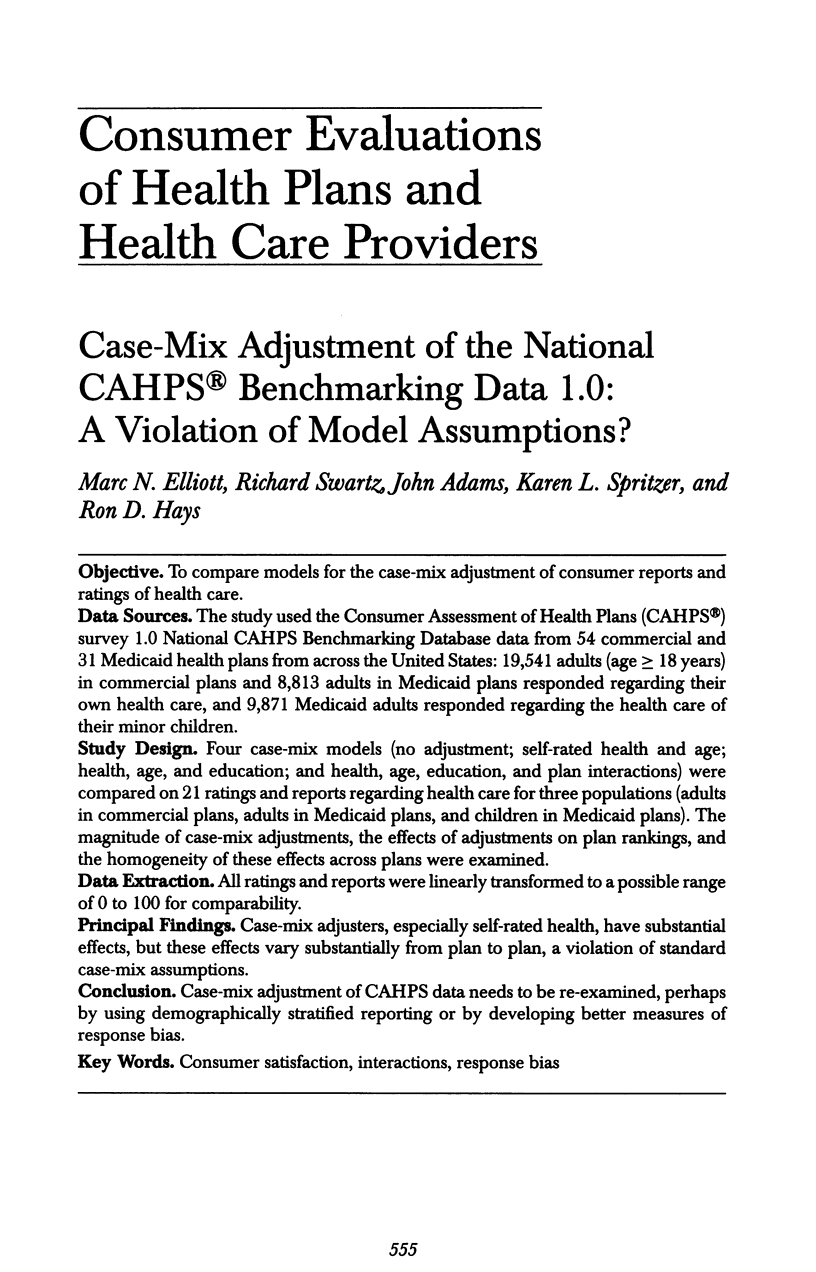


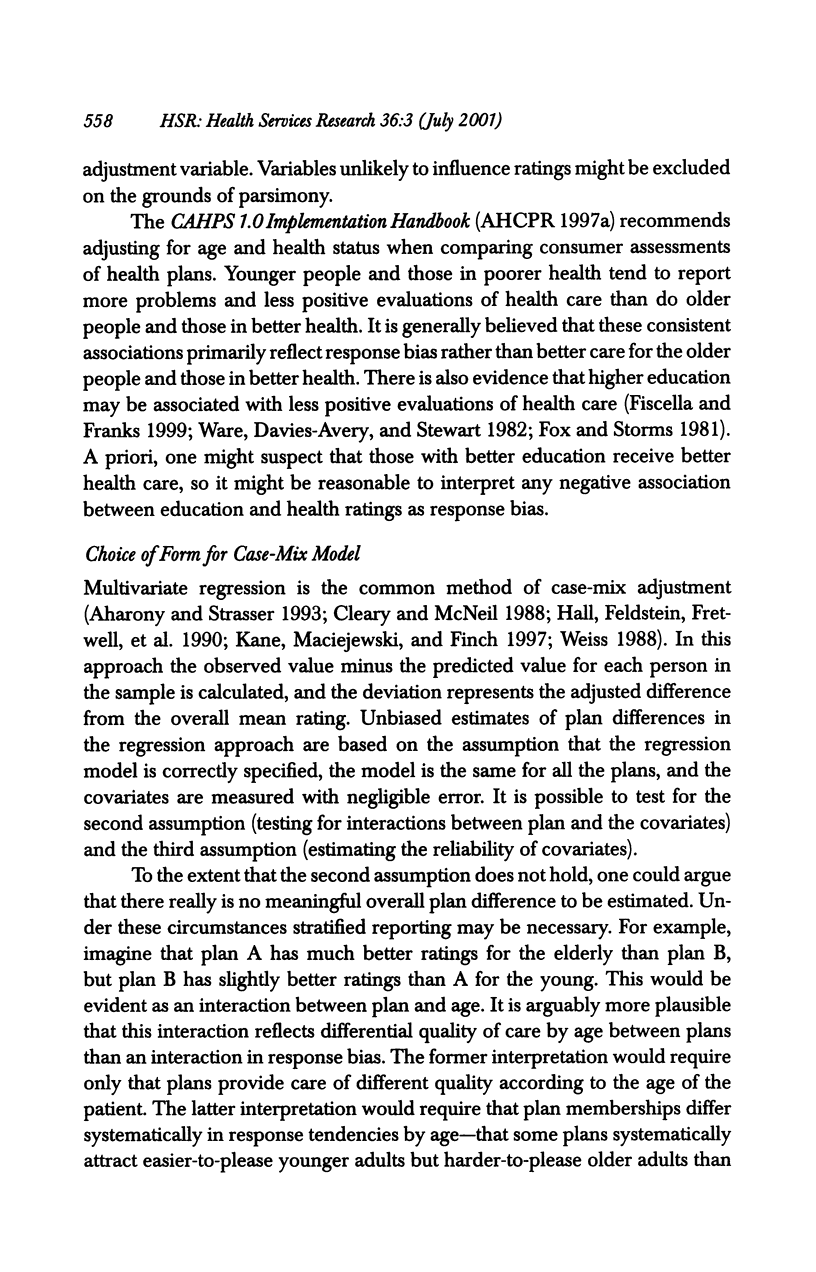
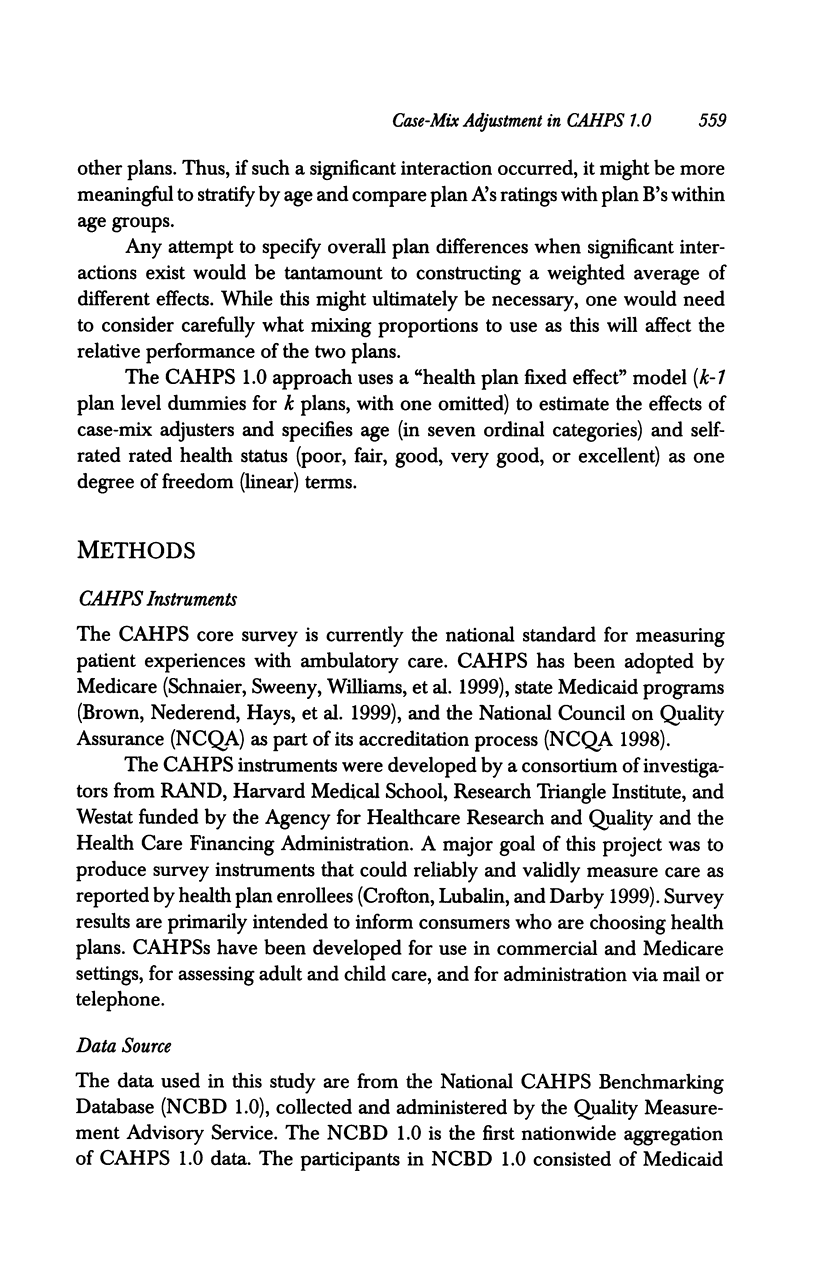

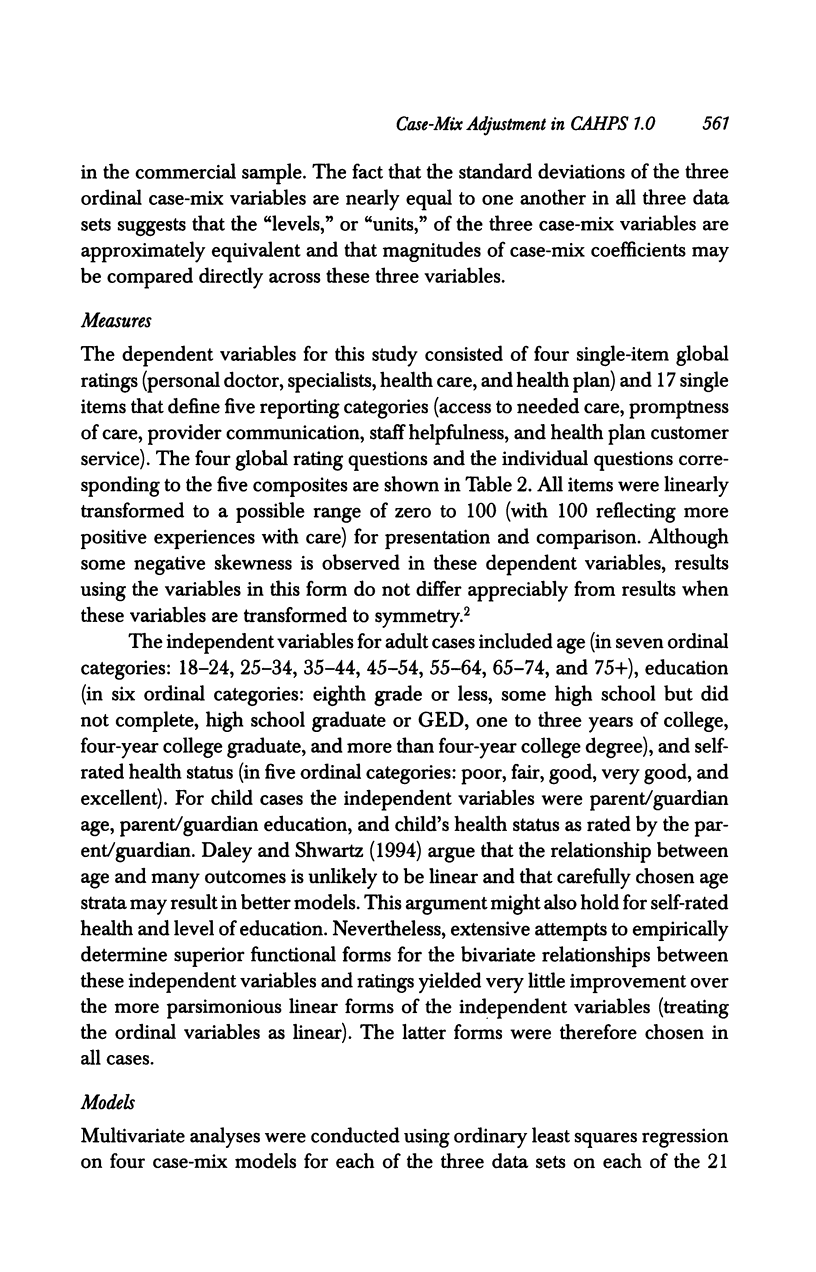

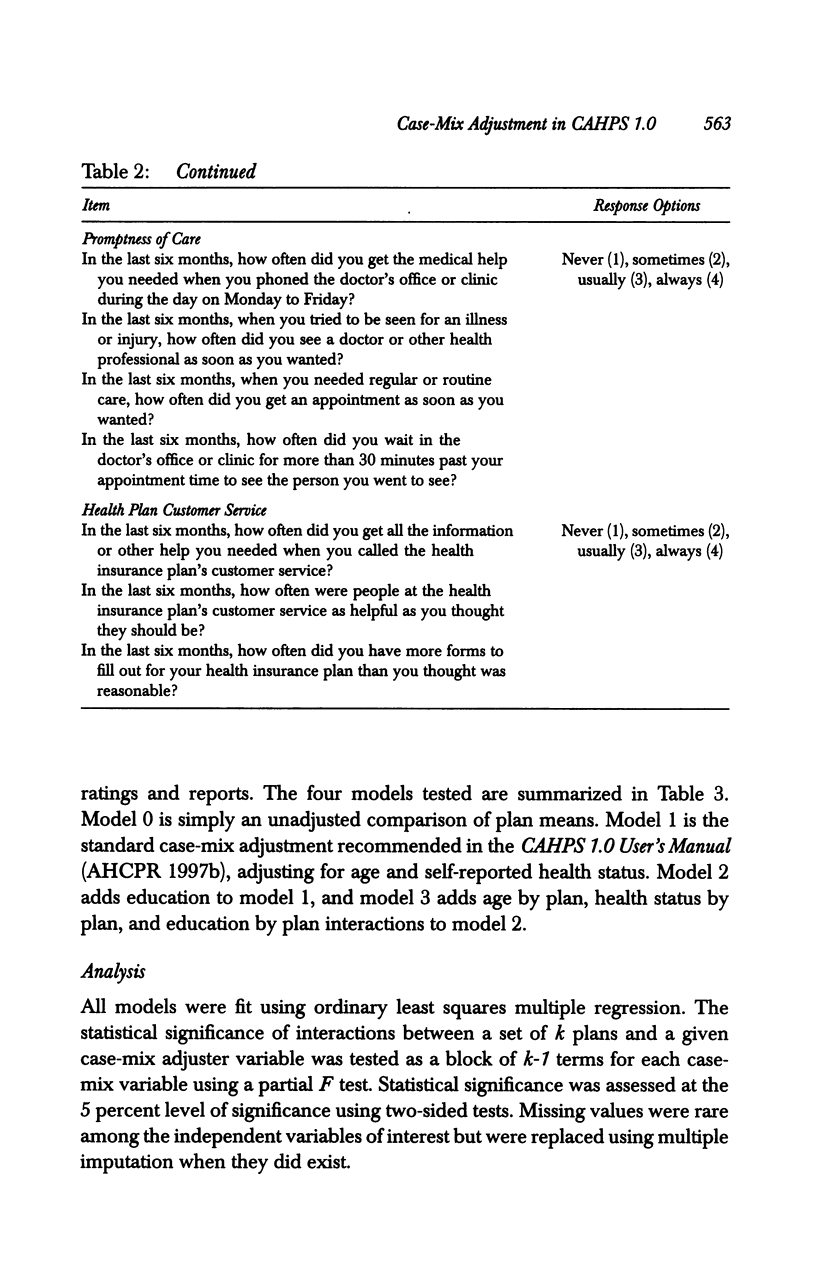
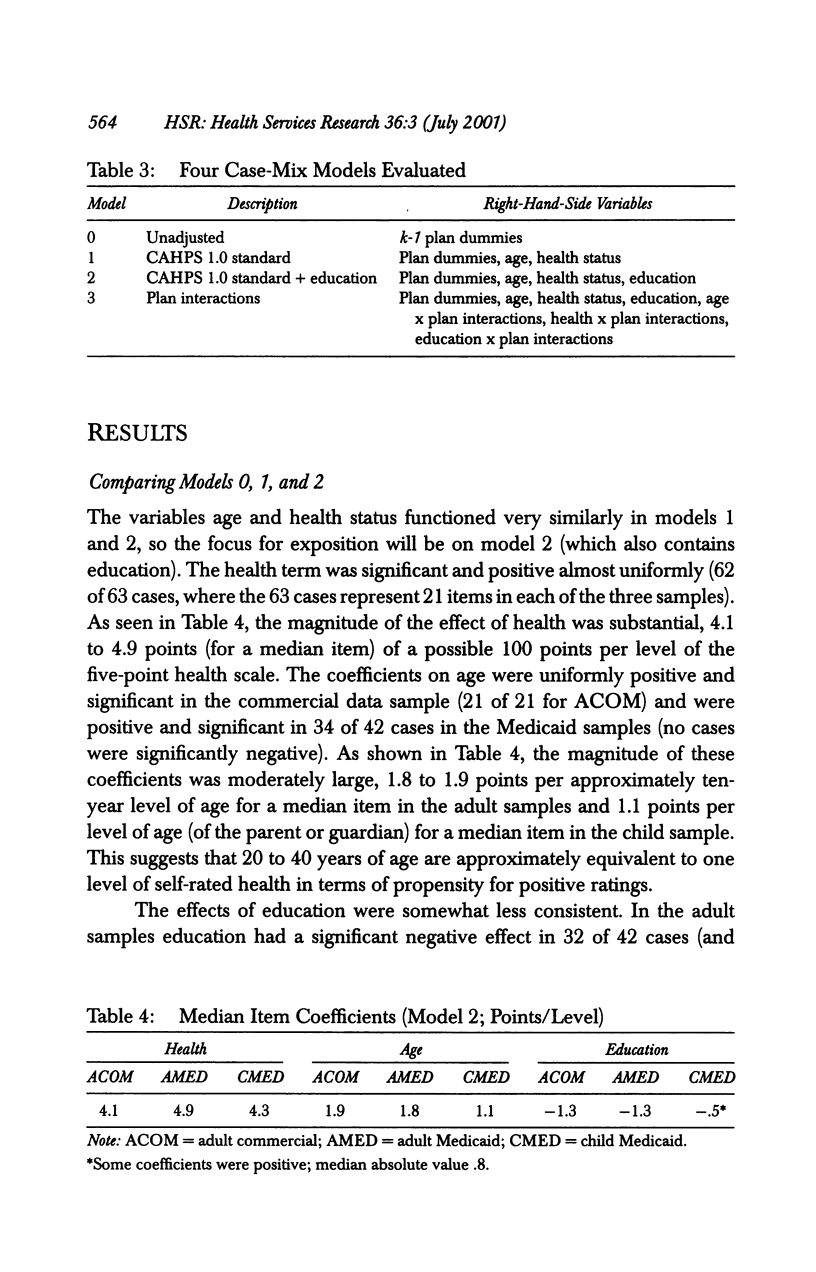
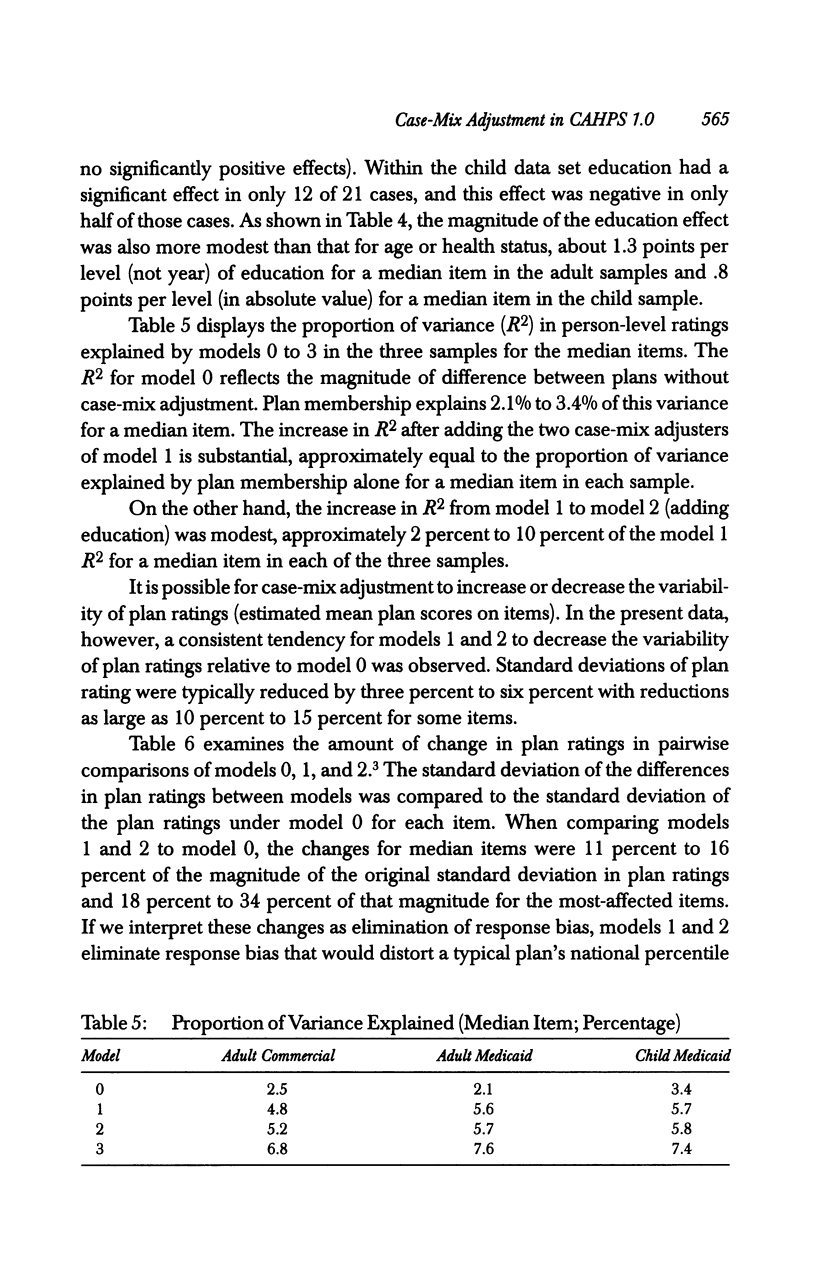
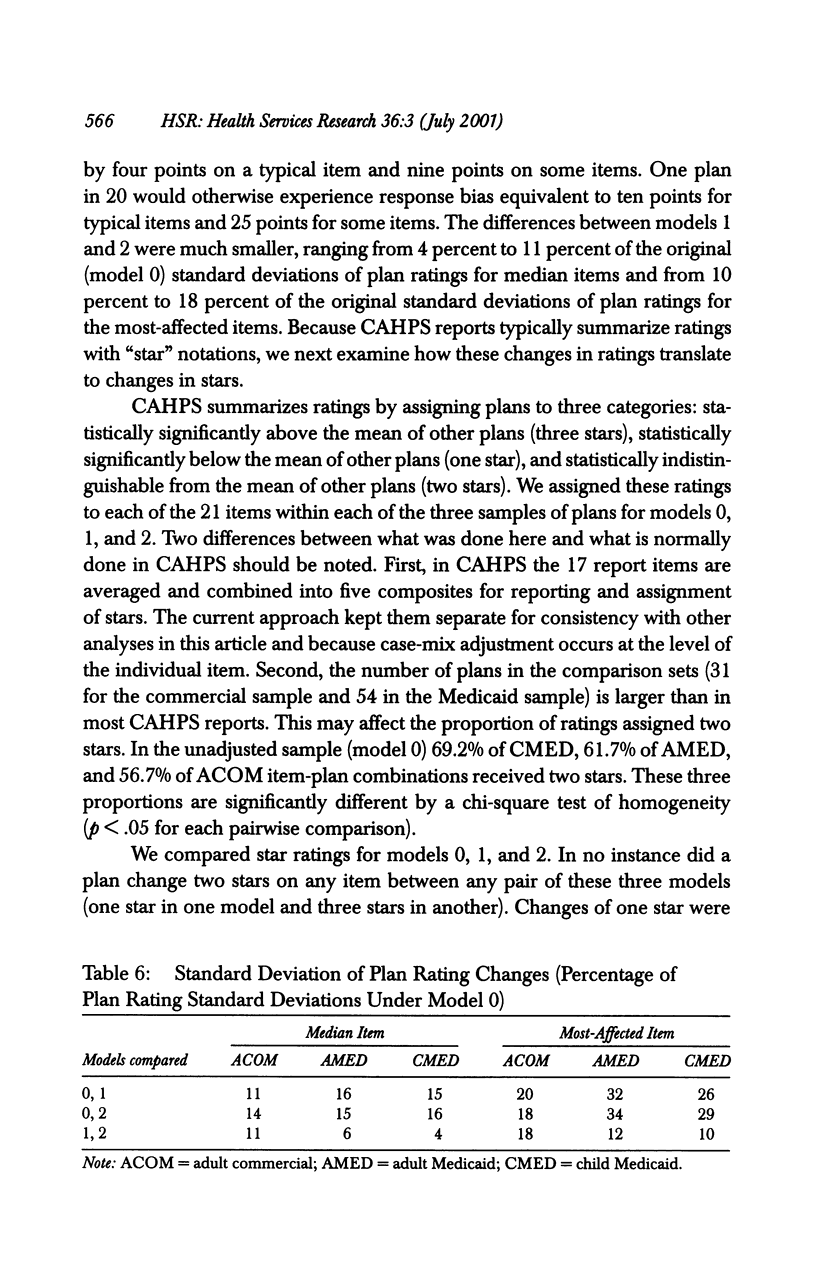
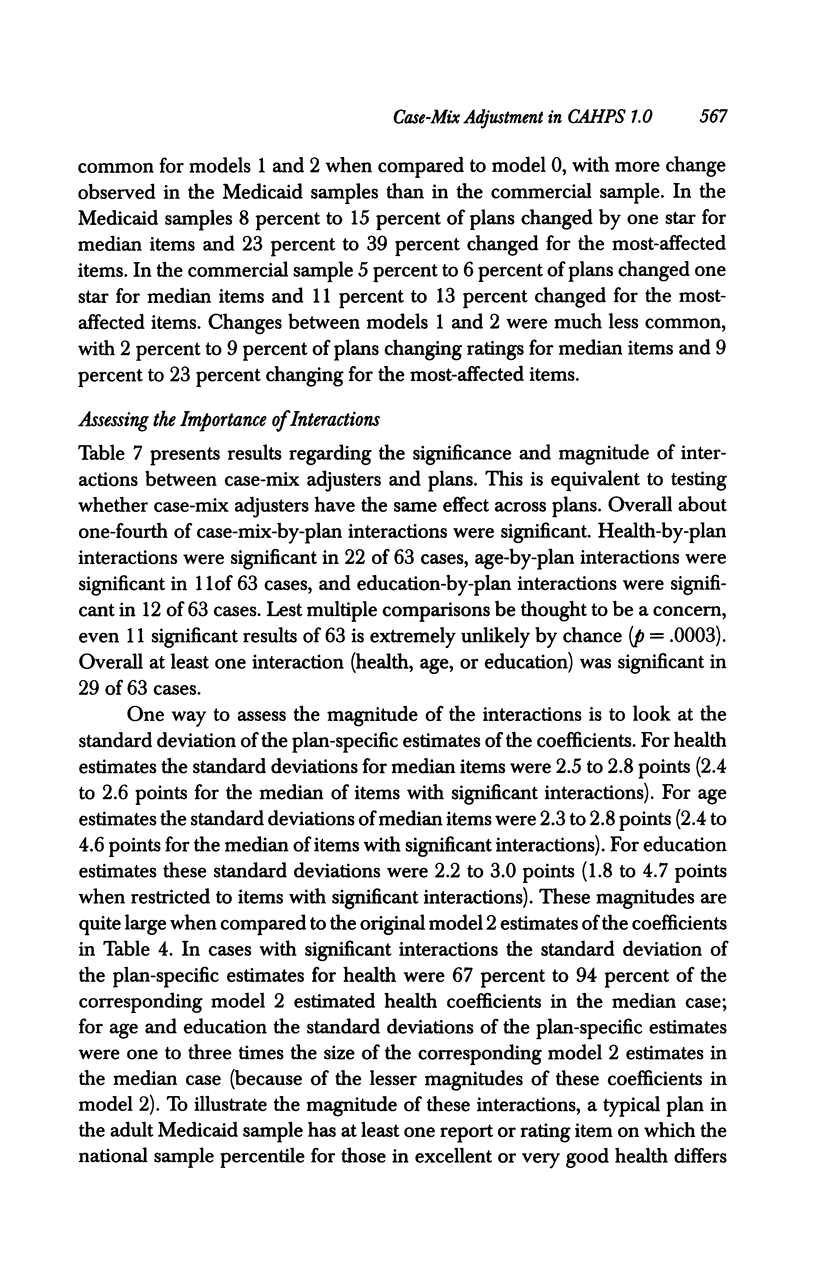
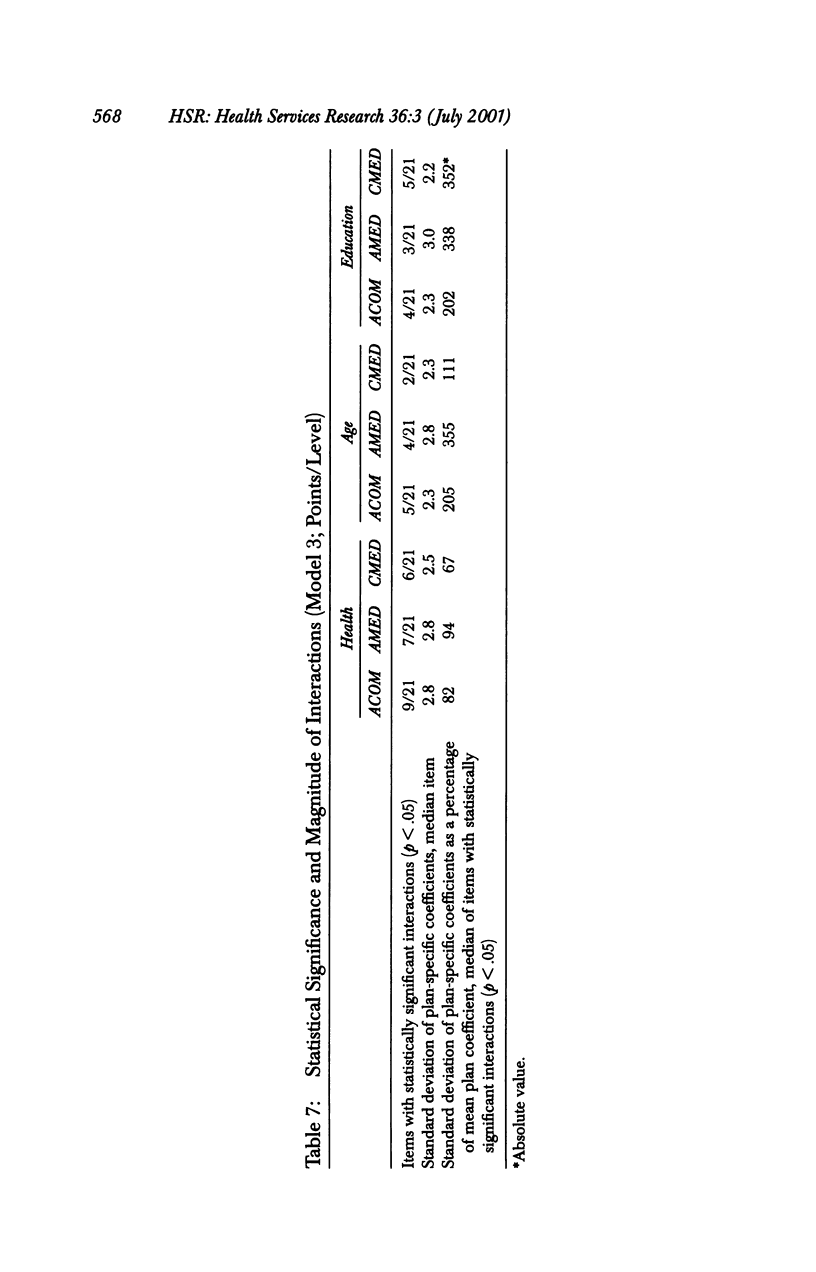

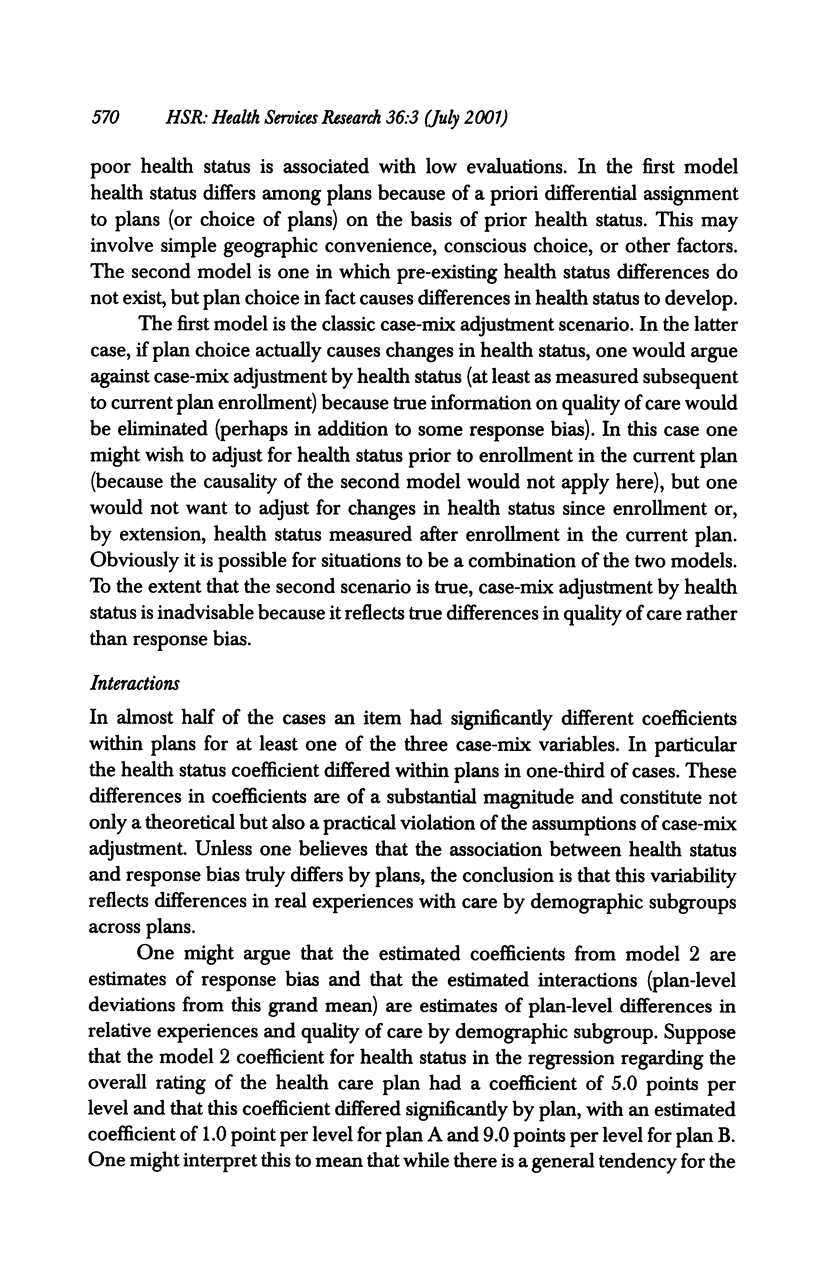

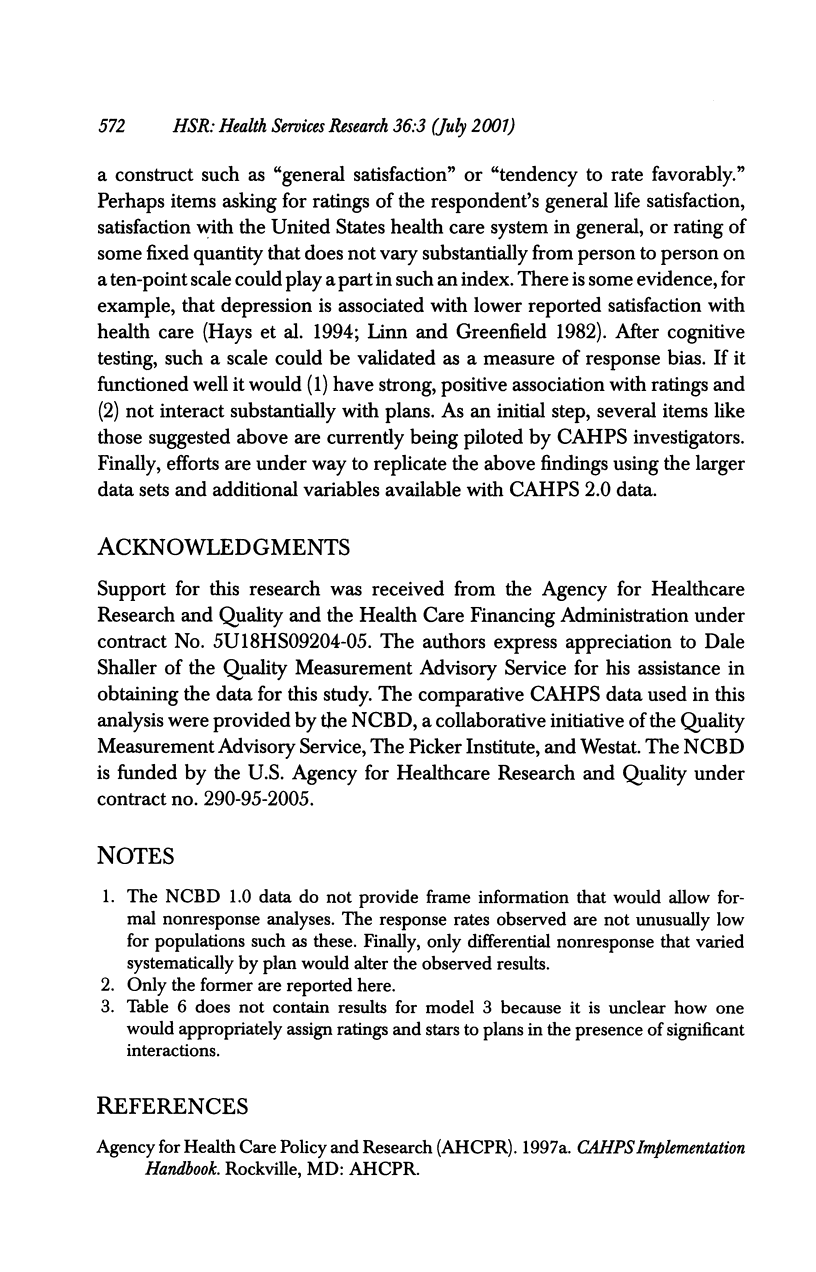
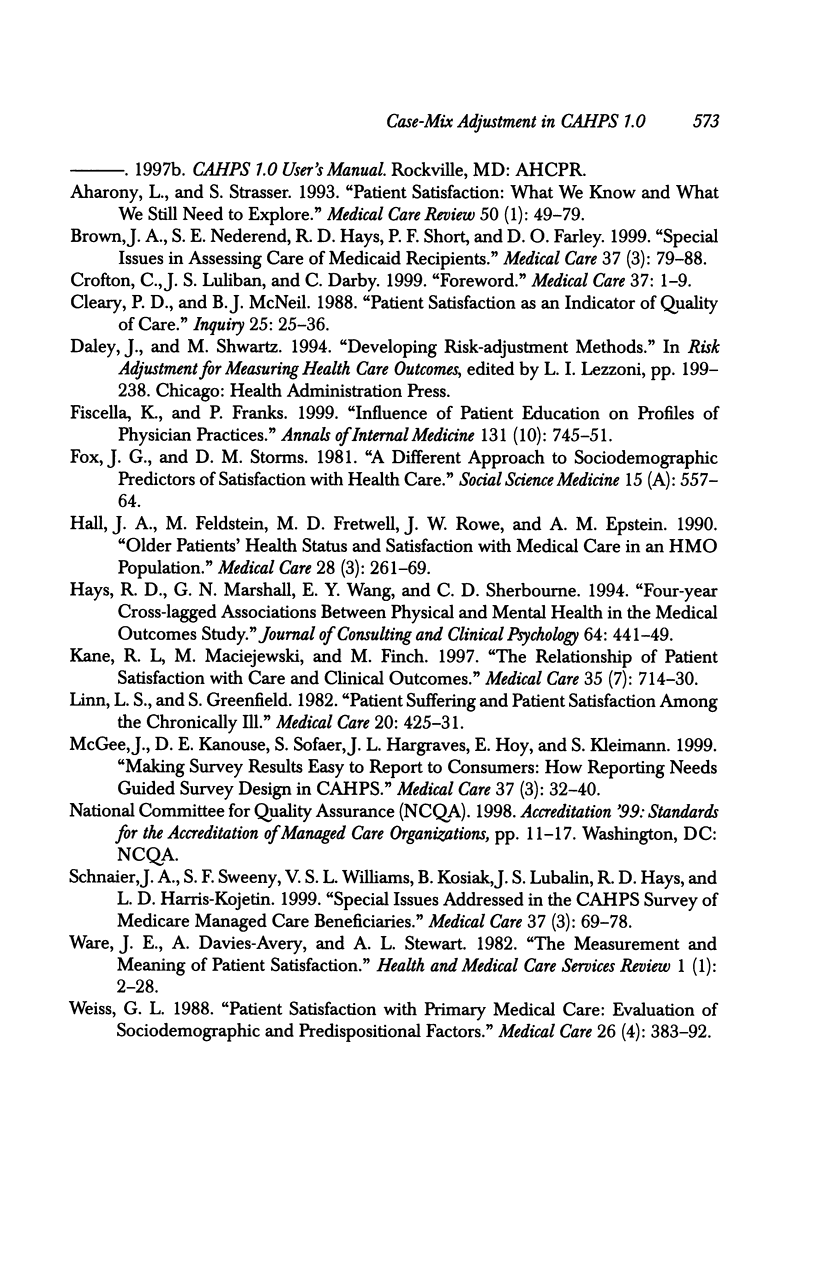
Selected References
These references are in PubMed. This may not be the complete list of references from this article.
- Aharony L., Strasser S. Patient satisfaction: what we know about and what we still need to explore. Med Care Rev. 1993 Spring;50(1):49–79. doi: 10.1177/002570879305000104. [DOI] [PubMed] [Google Scholar]
- Cleary P. D., McNeil B. J. Patient satisfaction as an indicator of quality care. Inquiry. 1988 Spring;25(1):25–36. [PubMed] [Google Scholar]
- Fiscella K., Franks P. Influence of patient education on profiles of physician practices. Ann Intern Med. 1999 Nov 16;131(10):745–751. doi: 10.7326/0003-4819-131-10-199911160-00005. [DOI] [PubMed] [Google Scholar]
- Fox J. G., Storms D. M. A different approach to sociodemographic predictors of satisfaction with health care. Soc Sci Med A. 1981 Sep;15(5):557–564. doi: 10.1016/0271-7123(81)90079-1. [DOI] [PubMed] [Google Scholar]
- Hall J. A., Feldstein M., Fretwell M. D., Rowe J. W., Epstein A. M. Older patients' health status and satisfaction with medical care in an HMO population. Med Care. 1990 Mar;28(3):261–270. doi: 10.1097/00005650-199003000-00006. [DOI] [PubMed] [Google Scholar]
- Hays R. D., Marshall G. N., Wang E. Y., Sherbourne C. D. Four-year cross-lagged associations between physical and mental health in the Medical Outcomes Study. J Consult Clin Psychol. 1994 Jun;62(3):441–449. doi: 10.1037//0022-006x.62.3.441. [DOI] [PubMed] [Google Scholar]
- Kane R. L., Maciejewski M., Finch M. The relationship of patient satisfaction with care and clinical outcomes. Med Care. 1997 Jul;35(7):714–730. doi: 10.1097/00005650-199707000-00005. [DOI] [PubMed] [Google Scholar]
- Linn L. S., Greenfield S. Patient suffering and patient satisfaction among the chronically ill. Med Care. 1982 Apr;20(4):425–431. doi: 10.1097/00005650-198204000-00007. [DOI] [PubMed] [Google Scholar]
- Weiss G. L. Patient satisfaction with primary medical care. Evaluation of sociodemographic and predispositional factors. Med Care. 1988 Apr;26(4):383–392. doi: 10.1097/00005650-198804000-00007. [DOI] [PubMed] [Google Scholar]


